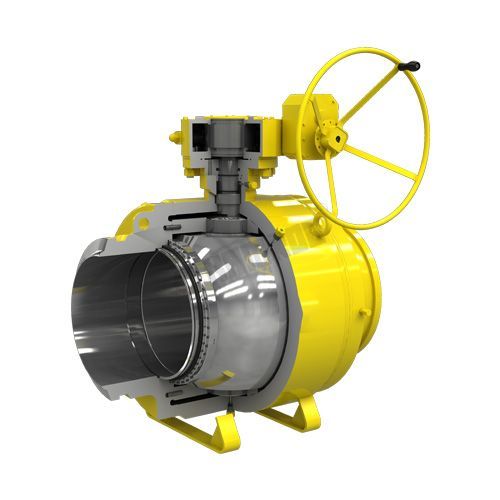When it comes to high-pressure applications that require reliable sealing and minimal risk of leaks, a fully welded ball valve is often the valve of choice. These valves are essential in industries like oil and gas, chemical processing, and power generation, where safety and performance are critical. But how do they work, and what makes them different from traditional ball valves?
In this blog, we’ll explore the mechanics, features, and advantages of fully welded ball valves, and why they are a preferred solution for many industrial applications.
A fully welded ball valve is a type of ball valve in which the body is entirely welded together, as opposed to being bolted. The welded body construction gives this valve design enhanced durability and resistance to leakage. This construction method is especially crucial in high-pressure systems, where the risk of potential leaks needs to be minimized.
The fully welded ball inside the valve operates like a traditional ball valve, using a hollowed-out sphere (the ball) to control the flow of fluid. However, the main difference lies in the welding process that bonds the valve body and the ends, ensuring a more secure, leak-resistant unit. These valves are ideal for demanding applications in industries requiring fire-safe mechanisms and a robust design.
The operation of a fully welded ball valve is relatively straightforward. The ball inside the valve has a hole or port through its center. When the valve handle or actuator rotates the ball, the hole aligns with the flow path, allowing fluid to pass through. When the ball is rotated 90 degrees to the closed position, the hole is no longer aligned with the flow path, and the valve stops the fluid flow.
In high-pressure applications, this type of valve provides superior sealing due to its welded construction, reducing the likelihood of potential leaks. This is especially important in industries where fluid containment and safety are paramount.

Fully welded ball valves are used in a variety of industries and applications, including:
While standard ball valves can be used in a variety of applications, fully welded ball valves offer additional benefits, especially for high-pressure and safety-critical systems. Unlike standard ball valves, which typically rely on bolted body connections, the welded body of a fully welded valve eliminates potential leak points, making it a more secure and reliable choice for critical applications.
To ensure the quality and performance of fully welded ball valves, manufacturers follow specific standards such as API (American Petroleum Institute) and CE certification (Conformité Européenne). These certifications guarantee that the valves meet rigorous safety and performance criteria, ensuring they are fit for use in demanding environments.
The design of fully welded ball valves often incorporates features like high-strength alloys and advanced seals, ensuring leak-proof performance even under extreme conditions. One popular design in the market is the Cameron T31, a trusted model known for its durability, safety features, and exceptional sealing properties.
The seal is one of the most important elements of a fully welded ball valve. It ensures that the valve remains leak-tight, even under high pressure. The fire-safe designs incorporate seals that can withstand high temperatures, protecting the valve from failure in case of fire hazards. These seals are made of materials that maintain their integrity even in extreme conditions, further enhancing the valve's reliability and safety.
When choosing a manufacturer or supplier for fully welded ball valves, it's important to consider factors such as:
One of the leading names in the industry is Cameron, known for its fully welded ball valves like the Cameron T31 series, which is often preferred for its quality, innovation, and compliance with international standards.
Fully welded ball valves provide a secure and durable solution for industries requiring high-pressure control and fire-safe performance. With their leak-resistant design, robust construction, and long-term durability, these valves are indispensable for critical applications where safety and efficiency are a top priority. When selecting the right valve, consider certifications like API and CE certification, the quality of the seal, and the overall design to ensure the valve performs at its best under the toughest conditions.
By understanding the mechanics, advantages, and key features of fully welded ball valves, you can make an informed decision on the best solution for your application.